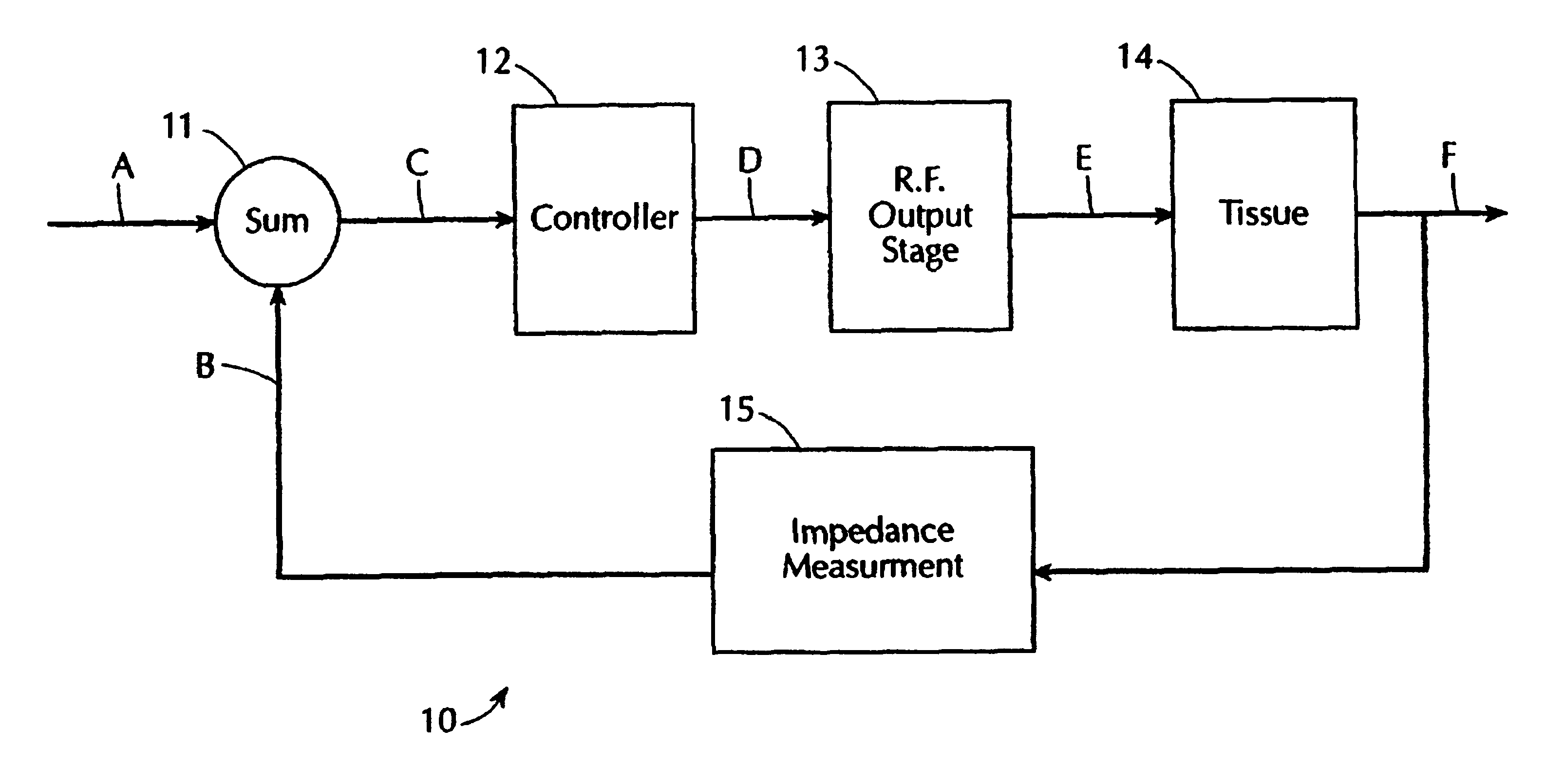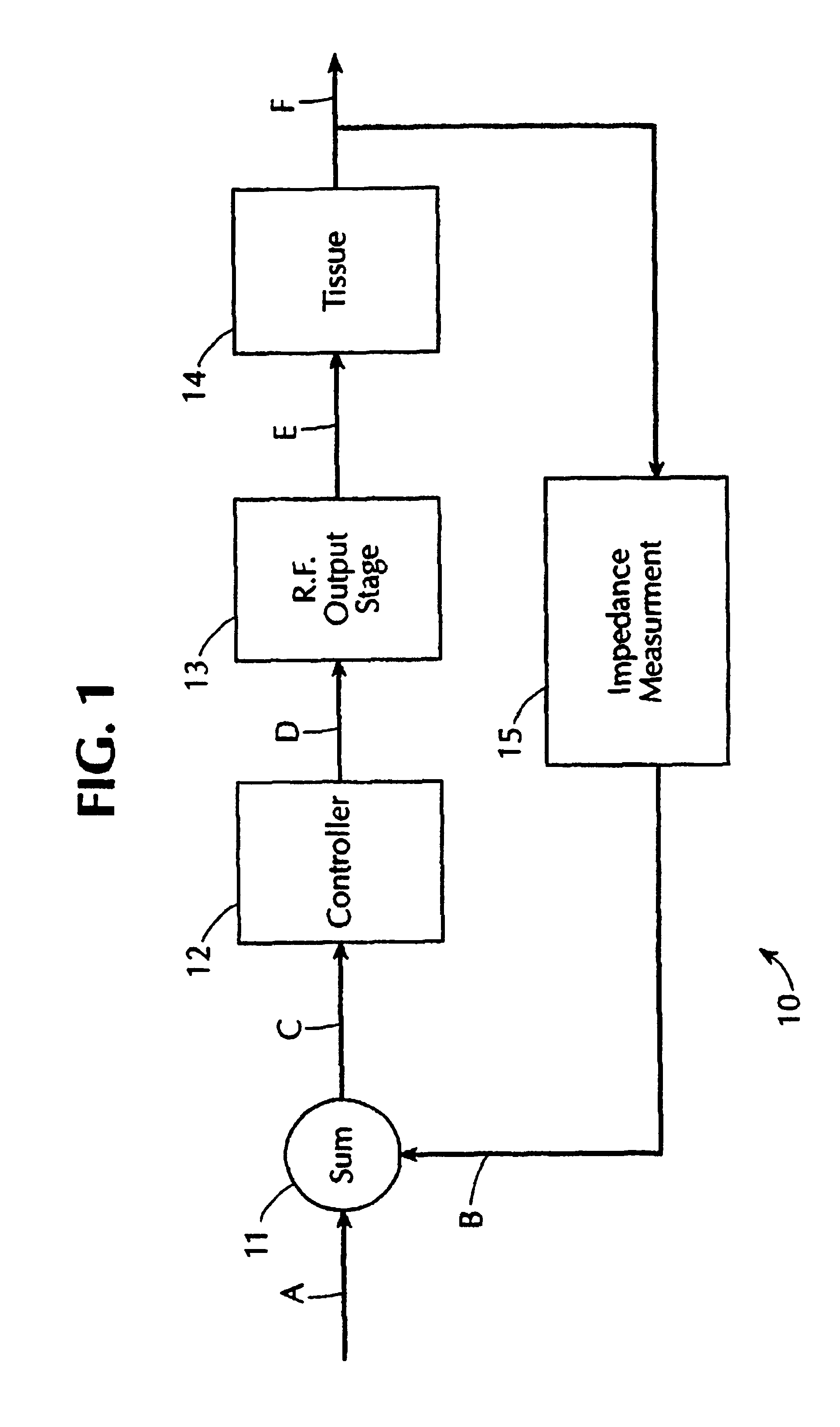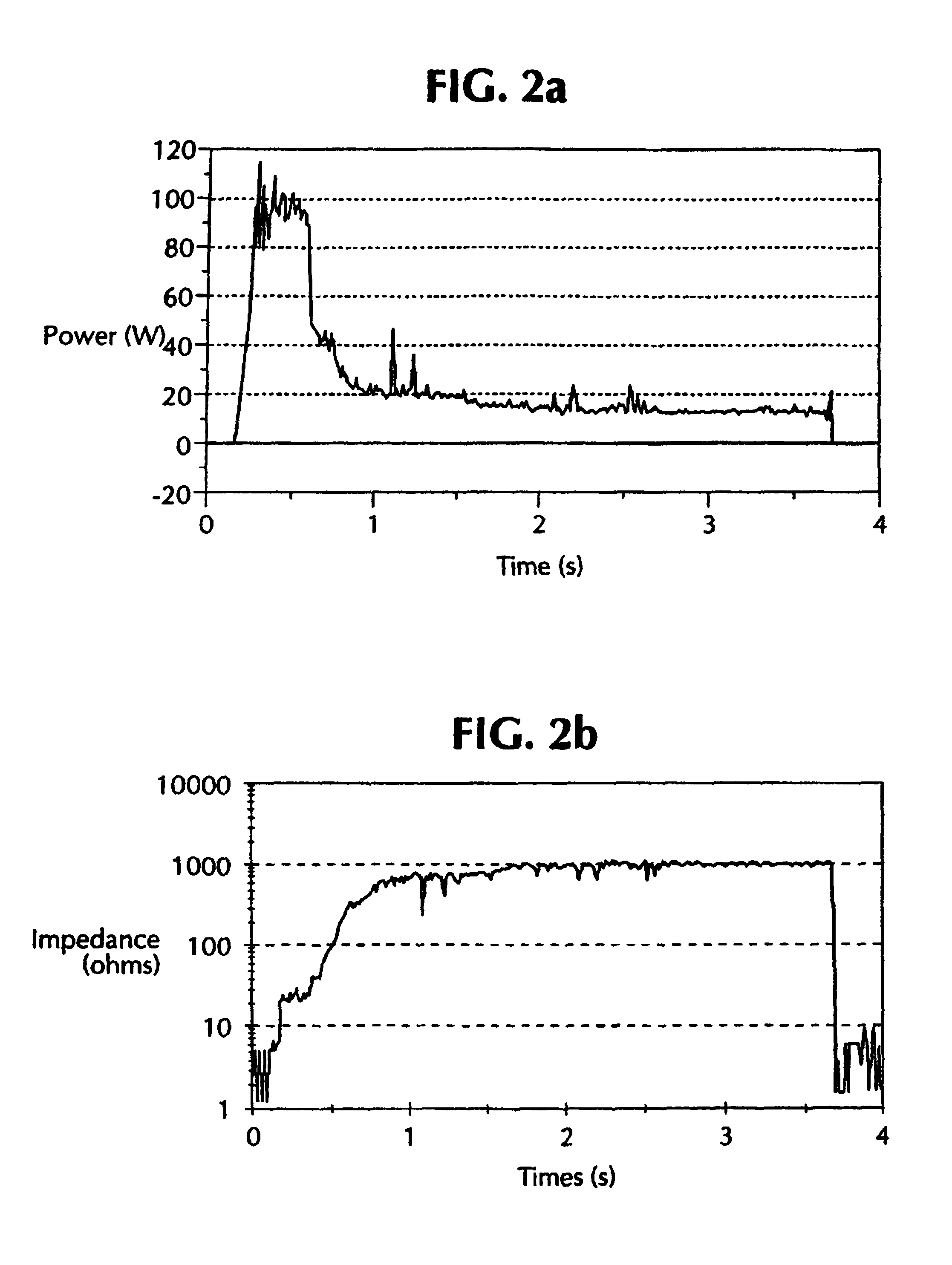Electrosurgical generator with adaptive power control
a generator and power control technology, applied in the field of electrosurgical generators with adaptive power control, can solve the problems of tissue charring, monotonous rise and fall of tissue impedance, and the inability to control the power supply of the generator, so as to reduce the level of tissue charring, improve the sealing characteristics of the electrode, and reduce the effect of thermal spread
- Summary
- Abstract
- Description
- Claims
- Application Information
AI Technical Summary
Benefits of technology
Problems solved by technology
Method used
Image
Examples
Embodiment Construction
[0038]The present invention discloses an adaptive, oscillatory power curve which is able to reduce thermal spread in each of these areas by applying power in a cyclical fashion, rather than continuously. During the periods of reduced power application, thermal energy is allowed to dissipate which reduces direct thermal conduction. Also, the steam exits the weld site in smaller bursts, which produces less thermal damage than one large burst. Finally, the impedance between the jaws of the electrosurgical instrument is kept low, which allows current to flow more directly between the jaws.
[0039]Charring is also reduced. High voltages contribute to tissue charring, which is why it is preferable to limit the output voltage of the electrosurgical general to 120 volts, and to periodically reduce it to a lower value during power cycling. A relatively low voltage is also important because it prevents electrical sparks, or arcs, from passing through the tissue and burning small holes in the ne...
PUM
 Login to View More
Login to View More Abstract
Description
Claims
Application Information
 Login to View More
Login to View More - R&D
- Intellectual Property
- Life Sciences
- Materials
- Tech Scout
- Unparalleled Data Quality
- Higher Quality Content
- 60% Fewer Hallucinations
Browse by: Latest US Patents, China's latest patents, Technical Efficacy Thesaurus, Application Domain, Technology Topic, Popular Technical Reports.
© 2025 PatSnap. All rights reserved.Legal|Privacy policy|Modern Slavery Act Transparency Statement|Sitemap|About US| Contact US: help@patsnap.com



